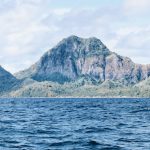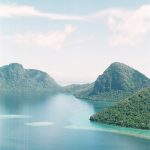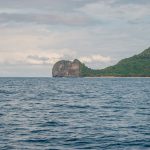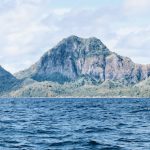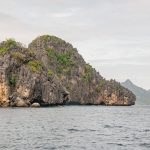Download links
如何安装Rediscovering Paradise: Boracay's Timeless Charm APK?
1. 点击已下载的[标题] APK文件。
2. 触摸安装。
3.按照屏幕上的步骤进行操作。
Description
Boracay, a small island in the Philippines, has undergone a remarkable transformation from a secluded paradise to a globally recognized tourist hotspot. Its history is rich and layered, beginning with its discovery by local fishermen and indigenous communities who utilized its pristine beaches and abundant marine resources. For centuries, Boracay remained relatively unknown to the outside world, a hidden gem cherished by those who stumbled upon its shores.
The turning point for Boracay came in the 1970s when it was first featured in travel publications, attracting adventurous backpackers and tourists seeking an idyllic escape. The island’s natural beauty, characterized by crystal-clear waters and vibrant coral reefs, began to draw attention from international travelers.
As word spread, Boracay’s popularity surged, leading to the establishment of accommodations ranging from humble guesthouses to luxurious resorts. By the late 1990s and early 2000s, Boracay had firmly established itself as a premier destination in Southeast Asia, hosting millions of visitors each year. However, this rapid development came with significant challenges, including environmental degradation and over-tourism, which would later prompt a reevaluation of how the island’s resources were managed.
Key Takeaways
- Boracay has transformed from a hidden gem to a world-renowned destination, attracting tourists from all over the globe.
- The environmental rehabilitation of Boracay aims to strike a balance between conservation efforts and sustainable tourism development.
- Rediscover Boracay’s timeless charm by exploring the island’s natural wonders, from pristine beaches to breathtaking sunsets.
- Embrace the unique culture and traditions of Boracay, and immerse yourself in the island’s rich local heritage.
- Sustainable tourism in Boracay promotes responsible travel and eco-friendly practices to preserve the island’s beauty for future generations.
The Environmental Rehabilitation of Boracay: Balancing Conservation and Tourism
In 2018, the Philippine government took decisive action to address the environmental issues plaguing Boracay by temporarily closing the island for rehabilitation. This unprecedented move aimed to restore the island’s natural beauty and address the consequences of unchecked tourism. During the six-month closure, extensive efforts were made to improve waste management systems, rehabilitate damaged ecosystems, and enforce stricter regulations on construction and development.
The government recognized that Boracay’s appeal lay not only in its stunning landscapes but also in its ecological integrity, which had been compromised by years of neglect. The rehabilitation process involved collaboration between various stakeholders, including local government units, environmental organizations, and the private sector. Initiatives such as reforestation projects and the establishment of marine protected areas were implemented to safeguard Boracay’s biodiversity.
Additionally, the government introduced measures to limit tourist capacity on the island, ensuring that the influx of visitors would not overwhelm its fragile ecosystems. This delicate balance between conservation and tourism is crucial for Boracay’s future, as it seeks to maintain its status as a premier destination while preserving its natural heritage for generations to come.
Rediscovering Boracay’s Timeless Charm: Exploring the Island’s Natural Wonders
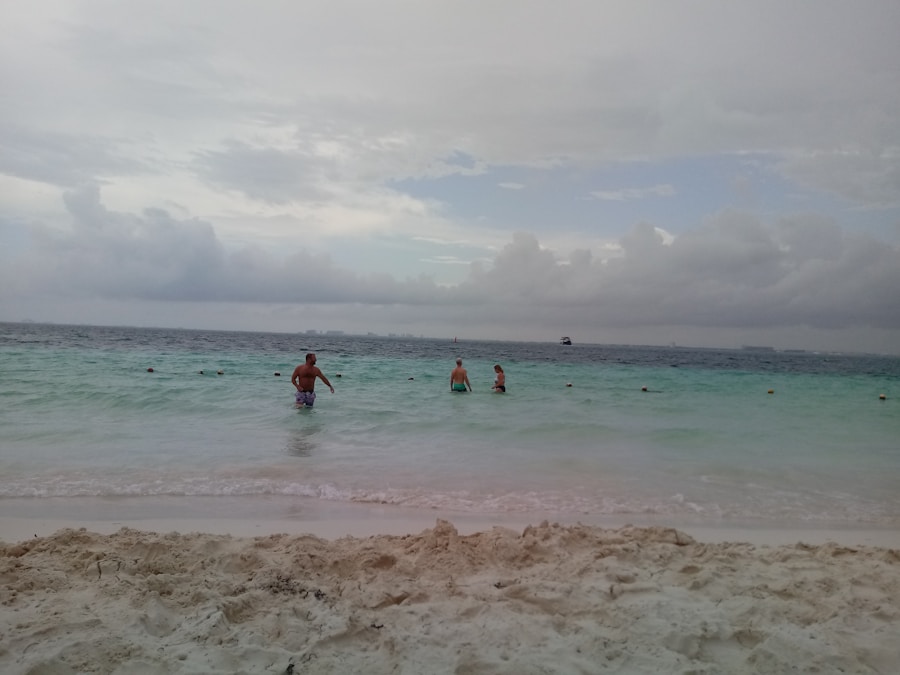
Beyond its famous beaches, Boracay is home to a wealth of natural wonders that beckon exploration. The island’s diverse ecosystems include lush tropical forests, vibrant coral reefs, and stunning limestone cliffs that provide a backdrop for various outdoor activities. One of the most captivating experiences is snorkeling or diving in the surrounding waters, where colorful marine life thrives amidst coral gardens.
Sites like Crocodile Island and Yapak Beach are renowned for their rich biodiversity, attracting both novice snorkelers and seasoned divers eager to witness the underwater spectacle. In addition to its marine attractions, Boracay offers opportunities for hiking and nature walks through its interior landscapes. Trails lead adventurers through verdant forests teeming with native flora and fauna, culminating in breathtaking viewpoints that showcase panoramic vistas of the island and its azure waters.
Mount Luho, the highest point on Boracay, provides an exhilarating trek rewarded with stunning views of both sides of the island. These natural wonders not only enhance Boracay’s appeal but also serve as reminders of the importance of preserving its ecological heritage amidst growing tourism pressures.
The Unique Culture and Traditions of Boracay: Embracing the Island’s Local Heritage
| Aspect | Data/Metric |
|---|---|
| Number of Local Festivals | There are at least 12 major festivals celebrated in Boracay, showcasing the island’s rich cultural heritage. |
| Local Handicrafts | Boracay is known for its intricate and colorful handwoven textiles, such as the patadyong and hablon, as well as traditional crafts like basketry and pottery. |
| Traditional Dances | The island features traditional dances like the Ati-Atihan, a lively and colorful dance that pays homage to the indigenous Ati people. |
| Local Cuisine | Boracay offers a wide array of local dishes, including seafood-based recipes and traditional Filipino delicacies like adobo and kare-kare. |
| Local Music | Visitors can enjoy live performances of traditional Filipino music, including the rhythmic beats of the kulintang and the melodic tunes of the kubing. |
Boracay’s cultural tapestry is woven from the traditions and practices of its indigenous communities, which have thrived on the island for generations. The Aklanon people, who are native to Boracay, have a rich cultural heritage that is reflected in their festivals, crafts, and culinary traditions. One of the most significant events is the Ati-Atihan Festival, celebrated annually in January.
This vibrant festival features colorful parades, traditional music, and dance performances that honor the island’s patron saint while showcasing the unique identity of its people. Local artisans contribute to Boracay’s cultural landscape through their craftsmanship, producing handmade items such as woven baskets, jewelry, and traditional clothing. Visitors have the opportunity to engage with these artisans and learn about their techniques, fostering a deeper appreciation for the island’s heritage.
Culinary experiences also play a vital role in understanding Boracay’s culture; local dishes often feature fresh seafood and tropical fruits that reflect the island’s bountiful resources. By embracing these cultural elements, tourists can gain insight into Boracay’s identity beyond its picturesque beaches.
Sustainable Tourism in Boracay: Promoting Responsible Travel and Eco-friendly Practices
As Boracay continues to navigate the complexities of tourism development, sustainable practices have become paramount in preserving its natural beauty and cultural integrity. The concept of sustainable tourism emphasizes responsible travel that minimizes environmental impact while benefiting local communities. In recent years, various initiatives have emerged to promote eco-friendly practices among visitors and businesses alike.
For instance, many resorts now implement waste reduction strategies, such as eliminating single-use plastics and promoting recycling programs. Additionally, educational campaigns encourage tourists to engage in responsible behaviors while exploring the island. This includes respecting local customs, supporting local businesses, and participating in conservation efforts such as beach clean-ups or tree planting activities.
By fostering a culture of sustainability among both tourists and residents, Boracay aims to create a harmonious relationship between tourism and environmental stewardship. This approach not only enhances the visitor experience but also ensures that future generations can enjoy the island’s unique charm.
The Future of Boracay: Preserving its Timeless Charm for Generations to Come

Looking ahead, the future of Boracay hinges on striking a balance between tourism growth and environmental preservation. As global travel trends evolve and more travelers seek authentic experiences rooted in sustainability, Boracay has an opportunity to redefine itself as a model for responsible tourism.
Moreover, engaging local communities in decision-making processes will be crucial for ensuring that development aligns with their needs and aspirations. By prioritizing community involvement and fostering partnerships between stakeholders, Boracay can cultivate a sense of ownership among residents while enhancing visitor experiences. As travelers increasingly seek destinations that prioritize sustainability and cultural authenticity, Boracay stands poised to embrace this shift while preserving its timeless charm for generations to come.
In conclusion, Boracay’s journey from a hidden gem to a world-renowned destination is marked by both triumphs and challenges. Its rich history, stunning natural beauty, vibrant culture, and commitment to sustainable tourism position it as a unique destination that continues to captivate visitors from around the globe. As it navigates the complexities of modern tourism, Boracay remains dedicated to preserving its essence while welcoming travelers who seek to experience its magic firsthand.
If you’re interested in learning more about popular tourist destinations in the Philippines, you may want to check out this article on top tourist spots in the Philippines. Boracay is often mentioned as one of the must-visit islands in the country, known for its stunning beaches and vibrant nightlife. This article provides insights into other beautiful destinations that travelers can explore in the Philippines.
FAQs
What is Boracay?
Boracay is a small island in the Philippines known for its beautiful white sand beaches and clear blue waters. It is a popular tourist destination for its stunning natural beauty and vibrant nightlife.
What are the popular activities in Boracay?
Some popular activities in Boracay include swimming, snorkeling, scuba diving, kite surfing, and island hopping. The island also offers a variety of restaurants, bars, and shops for visitors to enjoy.
When is the best time to visit Boracay?
The best time to visit Boracay is during the dry season, which typically runs from November to April. This is when the weather is most pleasant and the waters are calm and clear for swimming and water activities.
Is Boracay family-friendly?
Yes, Boracay is a family-friendly destination with plenty of activities and accommodations suitable for families. The island offers a range of options for all ages, from relaxing beach days to adventurous water sports.
Are there any environmental regulations in Boracay?
Yes, in 2018, the Philippine government closed Boracay for six months to rehabilitate the island and address issues such as overdevelopment and environmental degradation. Since then, strict regulations have been implemented to protect the island’s natural beauty and sustainability.

